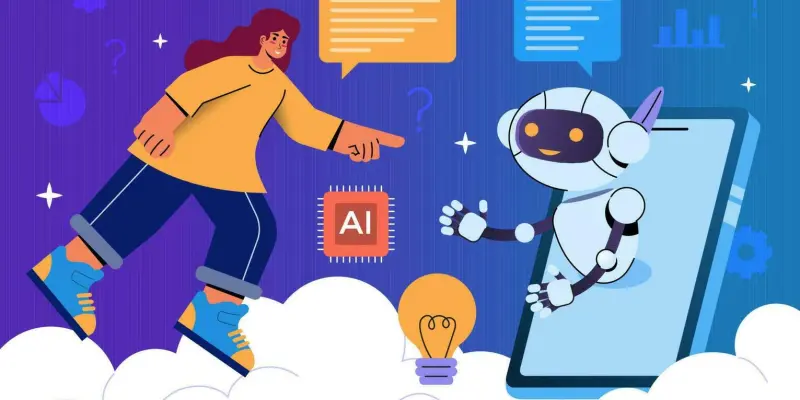The rapid evolution of the employment landscape has been significantly influenced by transformative forces such as technological advancements, particularly Artificial Intelligence (AI). These changes call for a reevaluation of how organizations cultivate their workforce to stay competitive.
The Only Constant is Change
Adapting to Evolving Roles
The dynamism of the workplace demands a blend of timeless skills like communication and emerging competencies driven by technology. Professionals, especially HR leaders, must adapt to evolving roles that now include training, development, and adaptability to thrive in an ever-changing environment. As the workplace continues to evolve, it becomes imperative for HR leaders to not only manage traditional HR functions but also to embrace new roles as talent developers and change agents.
Embracing Continuous Skill Development
Today’s workforce is distinguished by its ability to embrace continuous skill development, which is crucial for adapting to change. Continuous learning goes beyond attending occasional training sessions; it involves embedding learning into the organizational culture, where employees are encouraged and supported to develop new skills consistently.
The Impact of AI on the Workforce
AI-Driven Skill Transformation
AI technologies, specifically Generative AI (GAI), are accelerating the need for new roles and skill sets. A notable trend is the rapid transformation expected in job skills, with AI driving a 66% change in required skills by 2030 in Australia, compared to 50% without AI.
To harness the potential of AI, organizations must first understand the specific skills that will be in demand and develop targeted strategies to cultivate these skills within their workforce. By strategically investing in AI-driven skill development, organizations can position themselves at the forefront of technological advancement.
Leveraging AI for Human-Centered Strategies
AI should be leveraged to enhance human capabilities, allowing employees to focus on uniquely human tasks such as strategic and creative thinking. This approach not only improves efficiency but also fosters a more engaged and innovative workforce.
Soft Skills and AI Integration
Empowering Employees with Higher-Order Skills
AI is not only about efficiency but also about empowering employees to develop higher-order skills like creative thinking and emotional intelligence. Critical soft skills remain pivotal in unlocking human potential and ensuring organizational agility, particularly in challenging times.
Balancing Technology with Human Connection
The future of talent acquisition lies in balancing technological advancements with human elements like communication and storytelling. This balance ensures that organizations can leverage the best of both worlds, enhancing efficiency while maintaining a personal connection with candidates.
Facilitating Internal Mobility and Continuous Learning
Promoting a Culture of Continuous Learning
Encouraging a culture of continuous learning and internal mobility helps organizations build agility and resilience. Providing learning pathways and supporting professional growth are key strategies for retaining talent and ensuring employees’ relevance in a fast-changing workplace.
Supporting Professional Growth
Organizations that promote continuous learning and support internal mobility are better positioned to build resilient and agile workforces. By offering opportunities for skill development and career advancement, companies can foster a more motivated and capable workforce.
Challenges and Support in AI Adoption
Overcoming Implementation Challenges
Many organizations face challenges in AI implementation, with a significant gap between those leading in AI adoption and those lagging. Leaders and professionals need continuous upskilling to harness AI’s potential, supported by resources such as LinkedIn’s free AI courses. Addressing these challenges is crucial for maximizing the benefits of AI and ensuring a smooth transition.
Providing Resources for Upskilling
To support AI adoption, organizations must provide resources and opportunities for continuous learning.
Integrating Recruitment and Development
Holistic Talent Strategies
Effective talent strategies encompass both recruitment and continuous development, focusing on hard and soft skills. By integrating recruitment and development, organizations can create a seamless talent management system that supports employees throughout their entire career journey.
Aligning Hiring with Upskilling Efforts
By aligning hiring strategies with upskilling efforts, organizations can create a more cohesive and effective talent management system. This involves identifying the skills needed for future success and ensuring that both new hires and existing employees have access to the necessary training and development opportunities.
Building a Future-Forward Workforce
The rapid transformation occurring within the employment landscape is notably driven by advancements in technology, particularly Artificial Intelligence (AI). As these changes unfold, it’s imperative for organizations to reassess how they develop their workforce to maintain a competitive edge. This thorough analysis explores strategies that utilize both AI and essential soft skills, identifying significant trends and providing valuable insights on cultivating a strong, future-ready talent pool.
In conclusion, the dynamic employment landscape, shaped largely by AI advancements, requires a balanced focus on both technological proficiency and soft skills. By doing so, organizations can effectively prepare their talent base for future challenges, ensuring long-term success in a competitive environment.

